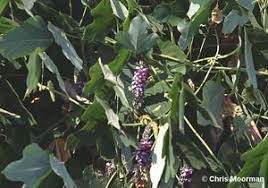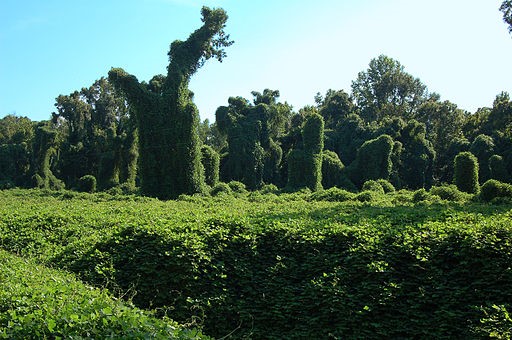Kudzu – Invasive and Exotic
go.ncsu.edu/readext?729201
en Español / em Português
El inglés es el idioma de control de esta página. En la medida en que haya algún conflicto entre la traducción al inglés y la traducción, el inglés prevalece.
Al hacer clic en el enlace de traducción se activa un servicio de traducción gratuito para convertir la página al español. Al igual que con cualquier traducción por Internet, la conversión no es sensible al contexto y puede que no traduzca el texto en su significado original. NC State Extension no garantiza la exactitud del texto traducido. Por favor, tenga en cuenta que algunas aplicaciones y/o servicios pueden no funcionar como se espera cuando se traducen.
Português
Inglês é o idioma de controle desta página. Na medida que haja algum conflito entre o texto original em Inglês e a tradução, o Inglês prevalece.
Ao clicar no link de tradução, um serviço gratuito de tradução será ativado para converter a página para o Português. Como em qualquer tradução pela internet, a conversão não é sensivel ao contexto e pode não ocorrer a tradução para o significado orginal. O serviço de Extensão da Carolina do Norte (NC State Extension) não garante a exatidão do texto traduzido. Por favor, observe que algumas funções ou serviços podem não funcionar como esperado após a tradução.
English
English is the controlling language of this page. To the extent there is any conflict between the English text and the translation, English controls.
Clicking on the translation link activates a free translation service to convert the page to Spanish. As with any Internet translation, the conversion is not context-sensitive and may not translate the text to its original meaning. NC State Extension does not guarantee the accuracy of the translated text. Please note that some applications and/or services may not function as expected when translated.
Collapse ▲Our county does not lack for the green blanket of the deciduous woody vine named Pueraria lobate, commonly called kudzu. This vine is found along field edges, riparian areas, right-of-ways and entrances into wooded areas. It is seen spreading its prolific self along and into the canopy of trees. It was introduced into the United States in the late 1800’s from Asia for the purpose of erosion control as a livestock forage.
Kudzu can grow anywhere from 35 to 100 feet in length. It’s leaves are alternate and compound with three leaflets. The lavender pea-like flowers are visible now (late August and into September). After the flowers are spend, flattened pods up to 3 inches in length will appear and mature into January.
The problem with kudzu is that it is fast growing (grows up to one foot per day). It spreads through runners, which are stems that root at the tips when it makes soil contact, rhizomes and by vines that root at the nodes to form new plants. It appears to consume just about whatever it touches. It is extremely difficult to contain much less control. Patience and persistence are needed when attempting to control this invasive, as it may take several years to manage. Kudzu can be controlled with glyphosate, but it will not be an easy task as it may take several years of follow-up treatments for eradication. There are stronger herbicides available, but they are not necessarily appropriate for the home landscape.
Before pulling out the backpack sprayer, cut climbing vines in trees at ground level. If feasible, mow or weed-eat ground level patches during the growing season so that the root crowns are visible. Once the vines re-sprout, the spot-spray the ground level foliage at the root crowns with a 5 percent solution of glyphosate. A surfactant should be added to the spray to help the glyphosate be more effective. Now is an ideal time to apply chemical control. Another control option would be to “paint” a 10 percent undiluted glyphosate concentrate (53.8%) solution to the entire node. The could impose more damage to the large root.
Sometimes mowing or weed eating to control the vine is not possible. If you find yourself in this situation, spray the stand with a 5 percent glyphosate and surfactant in late summer. Now is a great time for chemical control. Be cautious, non-target plants maybe at a higher risk for injury using this method. Glyphosate is a non-selective herbicide. These types of herbicides are not specific in acting against certain plant species and control all plant material which they come into contact. Continue monitoring the sprouting that may occur at the root crowns each year and re-treat annually until the control you desire is achieved. And as T.H. Palmer once said, “Tis a lesson you should heed, Try, try again; If at first you don’t succeed, Try, try again; Then your courage should appear, For if you will persevere, You will conquer, never fear; Try try again.”
When using herbicides, remember to follow label recommendations. Any mention of trade products, or firm names is for descriptive purposes only and does not imply endorsement by NC State University.






